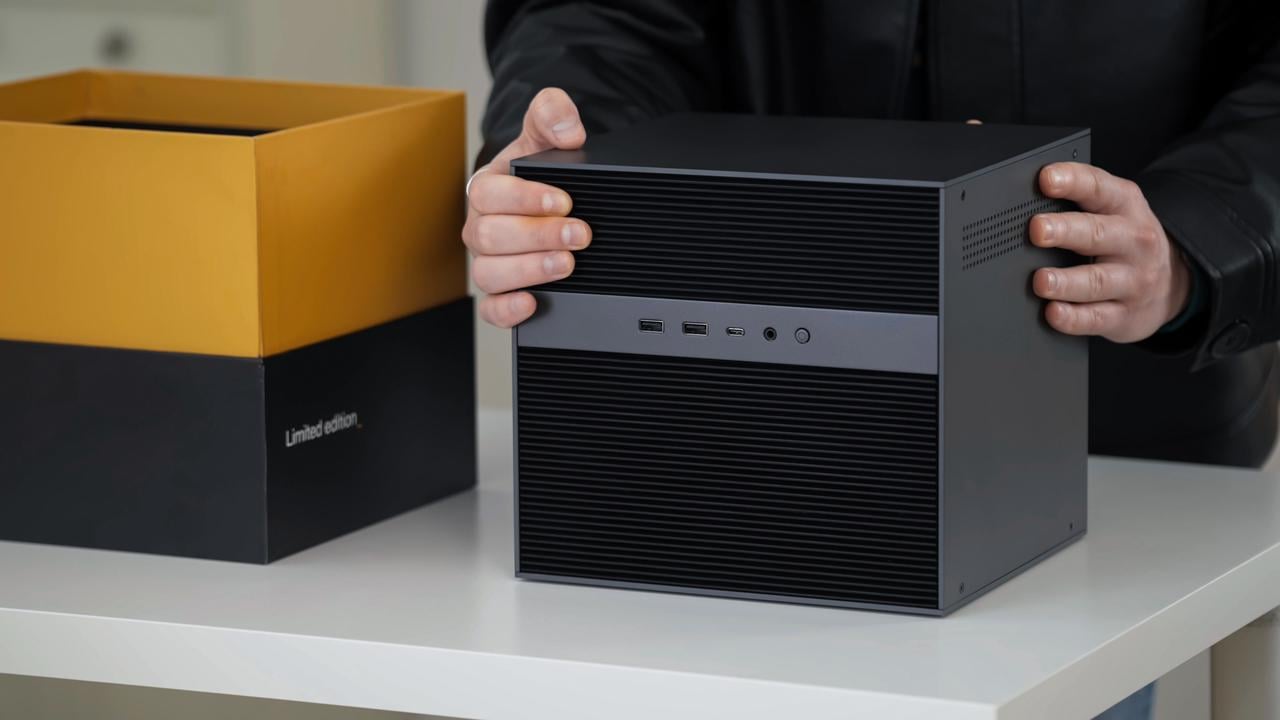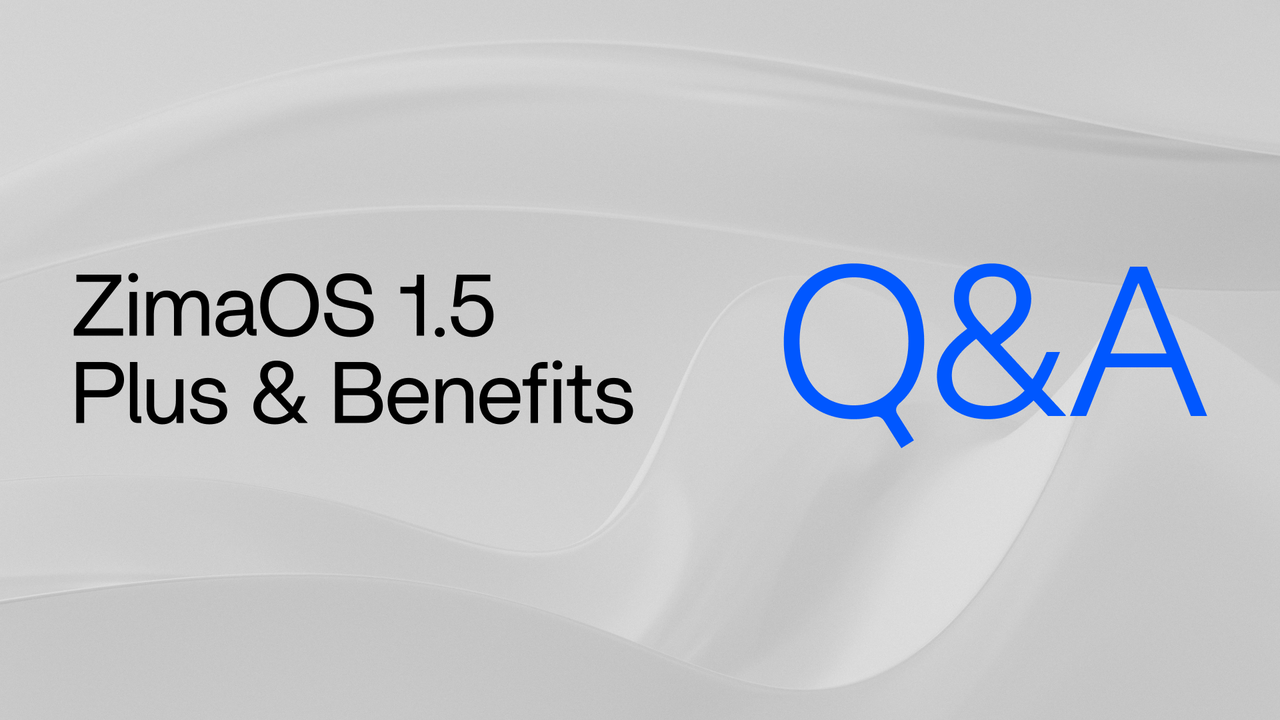Latest News
Why We Build ZimaCube and the Latest Progress
![]() John Guan - May 21, 2024
John Guan - May 21, 2024
Core principles of ZimaCube
At IceWhale, we’re energized to bring a new dynamism to the market. Our focus reevaluates the roles of personal clouds in data management, collaboration, and private AI across individuals, families, and small organizations. These are the settings where data, creative workflows, and development converge. In terms of hardware design, we’ve honed in on several key aspects:
- Exceptional Performance
High-speed processing and interfaces including Thunderbolt, networking, and storage capabilities.
- Expandability
Easily expand storage capacity, GPU power, or add specialized cards based on specific needs.
- Fun Factor
Designed to be engaging and enjoyable to use.
- Sleek Design
Simple yet sophisticated aesthetics.
- Community-Driven
Shaped by the insights and needs of our community.

Introducing ZimaCube, a product shaped by these principles. With support from 1,252 backers, we’ve refined many features over the past six months. Here’s an update on our progress:
- 7th SSD Bay, 6+1 Bay Design, and 10GbE
We’ve enhanced the 7th SSD Bay design, and the ZimaCube Pro now includes a 10GbE network. This innovative 7th Bay goes beyond standard PCIe and Thunderbolt peripherals, supporting modular accessories like a 4-slot SSD expansion module.Both ZimaCube and ZimaCube Pro support four SSDs in the 7th Bay, with ZimaCube achieving up to 800MB/s and ZimaCube Pro exceeding 3000MB/s. The 10-gigabit network can be further upgraded to 40GbE through a PCIe extension, significantly enhancing storage read/write capabilities.

ZimaCube Pro PVT Sample with 7th bay quad channel SSD slots

PCIe slot of motherboard, 7th bay and USB performance
- Customizable and Expandable
Our dual PCIe expansion slots support GPUs, network cards, and specialized cards like IP-KVM for various scenarios. This expandable design allows professional creators to enhance their encoding, decoding, and graphic processing capabilities on the ZimaCube. It also caters to Homelab setups, enabling further expansions such as 40GbE network cards and multi-route SSD RAIDs, significantly boosting the adaptability and functionality of what might otherwise be a static personal cloud product.
These expansion capabilities heavily rely on the two PCIe expansion slots available on the ZimaCube. The ZimaCube Pro enhances this with two rear Thunderbolt 4 ports and the innovative design of the 7th Bay. Our community has shown significant interest in the performance of these interfaces. To achieve the optimal outcomes discussed, we have revised and validated the PCIe resource allocation multiple times. After careful interface selections, our mass production design will offer optimized I/O performance distribution.

Motherboard of ZimaCube Pro PVT sampleThe upper expansion area, in addition to regular PCIe slots, also includes system M.2 SSD, along with USB host, 9-pin front panel, and other interfaces to meet your special needs.
Community early feedback of ZimaCube sample review

To ensure enthusiast voices significantly influence our product design and iteration process, we began inviting some of the most active IceWhale community members to participate in our feedback and testing phase two months ago.
Sabi’s Feedback on ZimaOS and ZimaCube
I’ve been thoroughly impressed with ZimaOS and its competitive features in the homelab market. It has significantly enhanced my experience, making it comparable to other advanced systems.
- ZimaOS Development
ZimaOS has developed into a robust platform with great features, comparable to other leading homelab systems. Its design originally aimed for a controlled, stable system supporting Zima devices, similar to Synology DSM. This made ZimaOS a reliable, resilient platform focused on uptime. However, its scope has expanded, which has led to some key features being overlooked due to community-driven changes.
- Key Features
ZimaOS originally focused on stability and resilience, which distinguished it from CasaOS, designed for tinkering and learning Docker. The expansion has caused some confusion and issues like inaccurate disk storage display and non-functional LED indicators, but the core system remains strong and promising.
- ZimaCube Development
ZimaCube has also evolved significantly with community input. Despite some confusion over hardware revisions and changes in storage options, the build quality and performance remain exceptional. Proper cooling solutions and clear communication on updates can further enhance user experience.
- Overall Experience
My overall experience with IceWhale products has been fantastic. The build quality, features, and usability fill a significant market gap. ZimaBlade introduced me to Docker, and I’ve recommended CasaOS on ZimaBoards to friends, leading to more positive feedback and orders.
I’m grateful for being part of this journey and look forward to seeing continued progress. I fully support IceWhale’s vision and am excited about the future.
Grandil’s Feedback on ZimaCube N100
I’ve had the privilege of using the ZimaCube N100 provided by IceWhale for a while now, and here are my thoughts:
- Build Quality
The unit arrived well-packaged, providing a satisfying unboxing experience. It’s a sturdy, compact device that blends seamlessly into its surroundings. The materials are thicker than expected, giving it a premium feel. The weight and sturdiness were pleasant surprises, contributing to an overall solid experience.
- Modifications
I’ve made three modifications to optimize its performance:
– Upgraded the RAM from 8GB to 16GB.
– Added two 40×10 Noctua fans to the front to cool the 10G NIC.
– Installed a 10G NIC.The internal chassis allows easy installation of these fans after removing the front grill, and they connect to the internal fan headers. Although there is some added noise, it’s nearly inaudible in a typical environment.
- Pros
– Solid and Sturdy: Exceeded expectations in build quality.
– Performance: The N100 runs Proxmox with two active VMs and several Docker containers effortlessly. It handles tasks without breaking a sweat.
– User-Friendly: Tools like lsscsi and lsblk simplify HDD mapping.
– Capability: The unit performs exceptionally well, handling everything I’ve thrown at it.
– Thermals: Peak temperature observed was 85°C during stress tests, indicating solid thermal management.
- Setup Details
– Base OS: Proxmox.
– Storage: ZFS raidz1 pool spanning six 4TB Seagate IronWolf NAS drives (5900rpm).
– VMs: One Windows 10 VM and one Kali Linux VM.
– Docker Containers: Running uptime-kuma, Nextcloud (with db), Sonarr, Radarr, SabNZBD, and Jellyfin.The ZimaCube excels as both a NAS and a mini server, making it a versatile and capable device. Its build quality and performance surpass competitors in the same segment, which often use plastic cases. The ZimaCube stands out with its robust metal construction, making it highly recommended for anyone seeking a powerful, cost-effective NAS solution.
- Concern
My only regret is not ordering the Pro version in addition to the N100.
The product team has responded to the early feedback from Sabi and Grandil, making corresponding adjustments to the cooling system, OS, and lighting effects on ZimaOS and the mass production units. If you want to learn more informations, please check out IceWhale community.
Production, Delivery, and Community Engagement
Lauren’s Commitment: Founder & CEO of IceWhale
The first batch of ZimaCube will ship to our Kickstarter supporters in early June. We will share real-time user feedback and responses. Our product team is busy with production, delivery, quality control, and software iterations. We also plan to co-create accessories with the community.
Join our 20,000-member Discord community to share your suggestions and questions.
Thanks for your time and trust!


